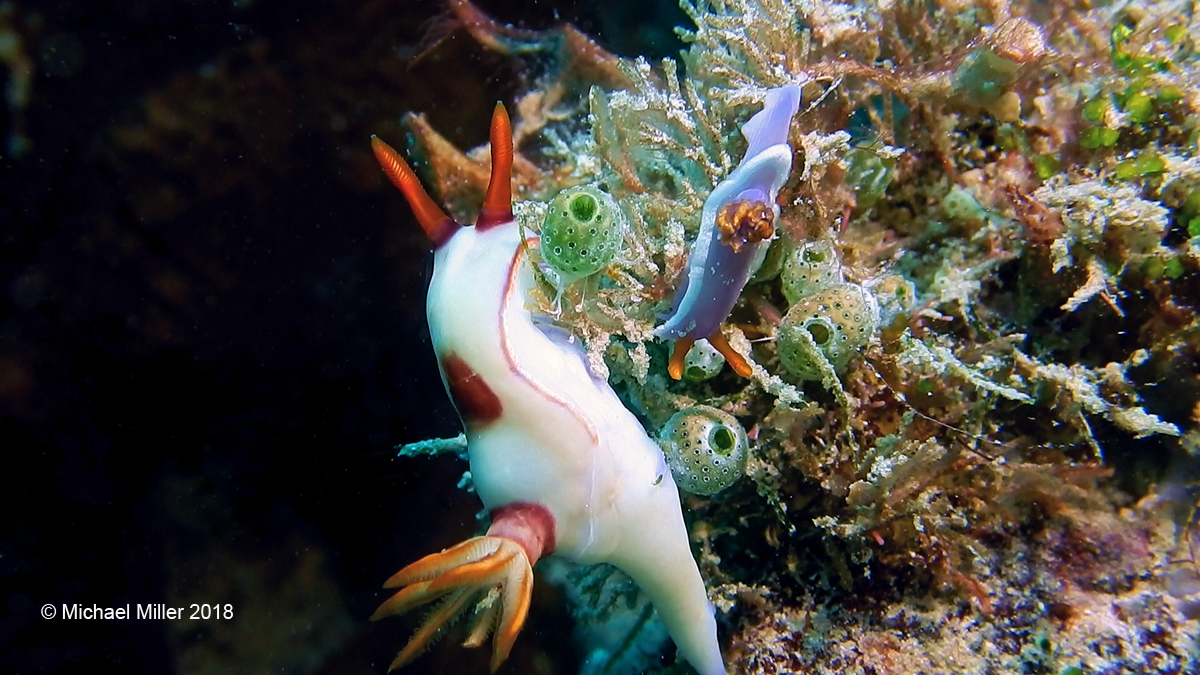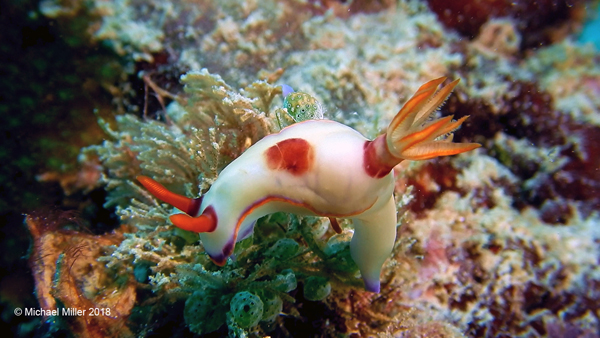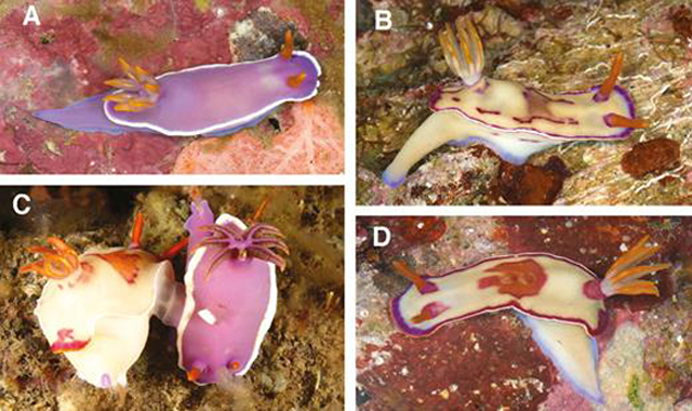 |
Hypselodoris iba
Image courtesy of Michael Miller, WebmasterFreeze Frame of video taken last month at Mabul Island, Malaysia
Nikon CoolPix AW 130
 |
Hypselodoris iba Gosliner & R. Johnson in Epstein et al., 2018 Well a mystery solved - Finally. I can't tell you how many times over the years someone has sent me a photo and asked why these two completely different looking species were mating and would they produce viable offspring. See BOW 654 as an example of one of them. Named for the Tagalog word for "different", the color morphs of this complicated species are absolutely different, so much so that I have argued with the authors that they could not be genetically identical. Well I guess I was wrong. Who would have thought? Some specimens are white with a prominent reddish-brown saddle, while others are all purple (see color plate below courtesy of Dr. Terry Gosliner). Both have a white marginal band, with a diffuse purple submarginal band. The gill and rhinophores are orange to red. |
 |
The purple color morph seen at left is almost identical to Hypselodoris variobranchiata, described in the same paper , but again, is genetically distinct. This species is known from Indonesia and the Philippines. Reference: Epstein, H.; J Hallas; R. Johnson; A. Lopez & T.M. Gosliner. 2018. Reading between the lines: revealing cryptic species diversity and colour patterns in Hypselodoris nudibranchs (Mollusca: Heterobranchia: Chromodorididae). Zoological Journal of the Linnean Society, 2018, XX, 1-74. With 40 figures. |
Sammamish, WA 98074
Oct., 2018
Send Dave email at davidwbehrens@gmail.com
WEBMASTER'S NOTES: Actually Martin Buschenreithner provided a clue early in March 2009 regarding the relationship between the two color morphs of Hypselodoris iba . If you accept the premise that copulation between species is an early on indicator of smilarity, then one must revisit the BOW 654 published in March 2009!

| Attention all you Sluggers, and you know who you are! The NSSI 2nd edition is now available in ebook PDF form . The hard back version will become available Nov. 1st. Both will cost $65 (individually). You will need to jump through a few hoops to get the electronic version as pdf distribution is protected by Adobe ID!! Please read the following to enable reading your electronic purchase! This new 2nd Edition is updated and reorganized, including 185 new species. Among other features, the new edition includes additional photographs of species, an identification key, and an up-to-date classification reflecting the latest evolutionary relationships. The Indo-Pacific represents the largest expanse of tropical ocean in the world, stretching from the Indian Ocean coast of southern Africa and the Red Sea to the central Pacific of the Hawaiian Islands, Easter Island and the Marquesas. This region supports the most diverse marine fauna of any place in the world for most groups of marine organisms. The nudibranchs and sea slugs are no exception to this rule; there are about 3,000 described species of these organisms in the world and at least 40% of these have been found exclusively in the Indo-Pacific tropics. This book illustrates 2,138 Indo-Pacific nudibranchs and sea slugs, including many undescribed species.
|

|
